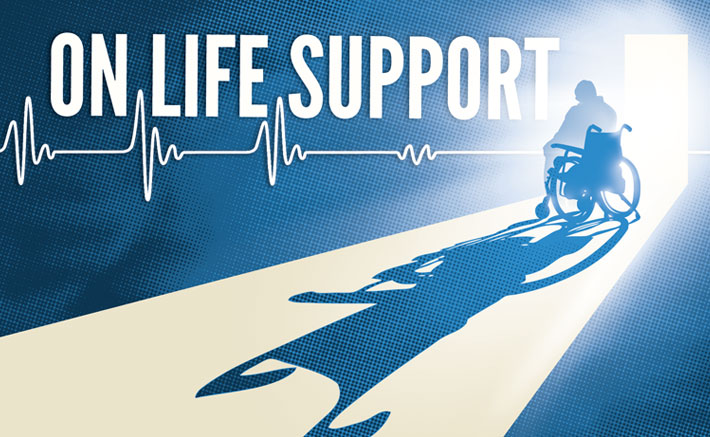

Men and women, some in wheelchairs, crowd into a small conference room on the first floor of the John J. Foley Skilled Nursing Facility in Yaphank. In their eyes are confusion, frustration and despair. They don’t know how much time they have left. Suffolk County Executive Steve Levy wants to sell this red brick, state-of-the-art medical complex to a private owner and use the proceeds to balance his 2011 budget, but a court battle has held up the sale since December. Levy has said there’s no money to keep it open past this month, but even that assertion is open to dispute. Promises have been made—and broken. The anger is palpable as this handful of residents and their relatives share their feelings of being pawns in a fiscal struggle. They tease each other as you might expect from people of diverse backgrounds bound together by forces beyond their control.
But it’s not all grim, they’ve got spirit.
“I’m apparently in worse shape than I look!” says Richard R. Smith, 60, with a tired smile. A carpenter, he’d come down with emphysema so severe that he could no longer hold a job, winding up homeless and weighing under 100 pounds.
Wayne Wachter, 41, was a cab driver who lost his leg when an oncoming car crossed the double-yellow line.
Richard Phillips, 49, sold electronic equipment at a department store for more than five years when his supervisor concluded that his cerebral palsy was too much for the customers.
Jeanne Melnik, 47, once routinely handled hundreds of thousands of dollars in overseas wire transfers for a multinational bank until her multiple sclerosis rendered her unable to commute to work.
Charles “Peaches” Cameron, 53, was assaulted and left in a coma.
Samantha Brasille, 31, suffered a debilitating brain injury from a car crash three years ago. She struggles to speak but her determination to stay in Suffolk so she can watch her 11-year-old son grow up—and not be transferred to Massachusetts, as some social workers have suggested to her—comes across loud and clear.
“I don’t want any change!” she says.
“I feel like I’m part of a family,” says Melnick, who requires total care because she has to be turned every two hours. “This is absolutely the best place for long-term care. I don’t want to leave. The more I think about it, I get sad. I don’t want to be separated from the friends I’ve made here.”

The John J. Foley Skilled Nursing Facility in Yaphank
When George Barnes wheels in his son Chris, everyone wishes Chris “Happy Birthday.” The former model for Calvin Klein and the Ford agency doesn’t respond. He was jogging in London six years ago when he had a heart attack. By the time he’d been taken to the hospital, he’d suffered severe brain damage. His father, who lives in Mastic Beach, rustles his hair, “I should get you a haircut, buddy!” he tells him. After making countless trips to London, Barnes was finally able to bring his son to Foley in October.
“Four other places turned him down without even doing an assessment,” says his father.
Suffolk County, like 35 other New York counties, operates the John J. Foley Skilled Nursing Facility as a public service, in essence offering a safety net to ensure that New Yorkers have access to long-term care they otherwise couldn’t afford. Roughly 88 percent of the Foley residents are covered by Medicaid, compared to 67 percent at other facilities in Suffolk, and 42 percent are under 65 years of age compared to 6 percent at other places, according to the League of Women Voters of Suffolk County. It’s not a formula for making money, and it costs the county somewhere between $5 million and $10 million each year, depending on who’s doing the accounting. The sale has long been a contentious issue, but a host of questions have cropped up in recent weeks to put the fate of the facility in doubt.




